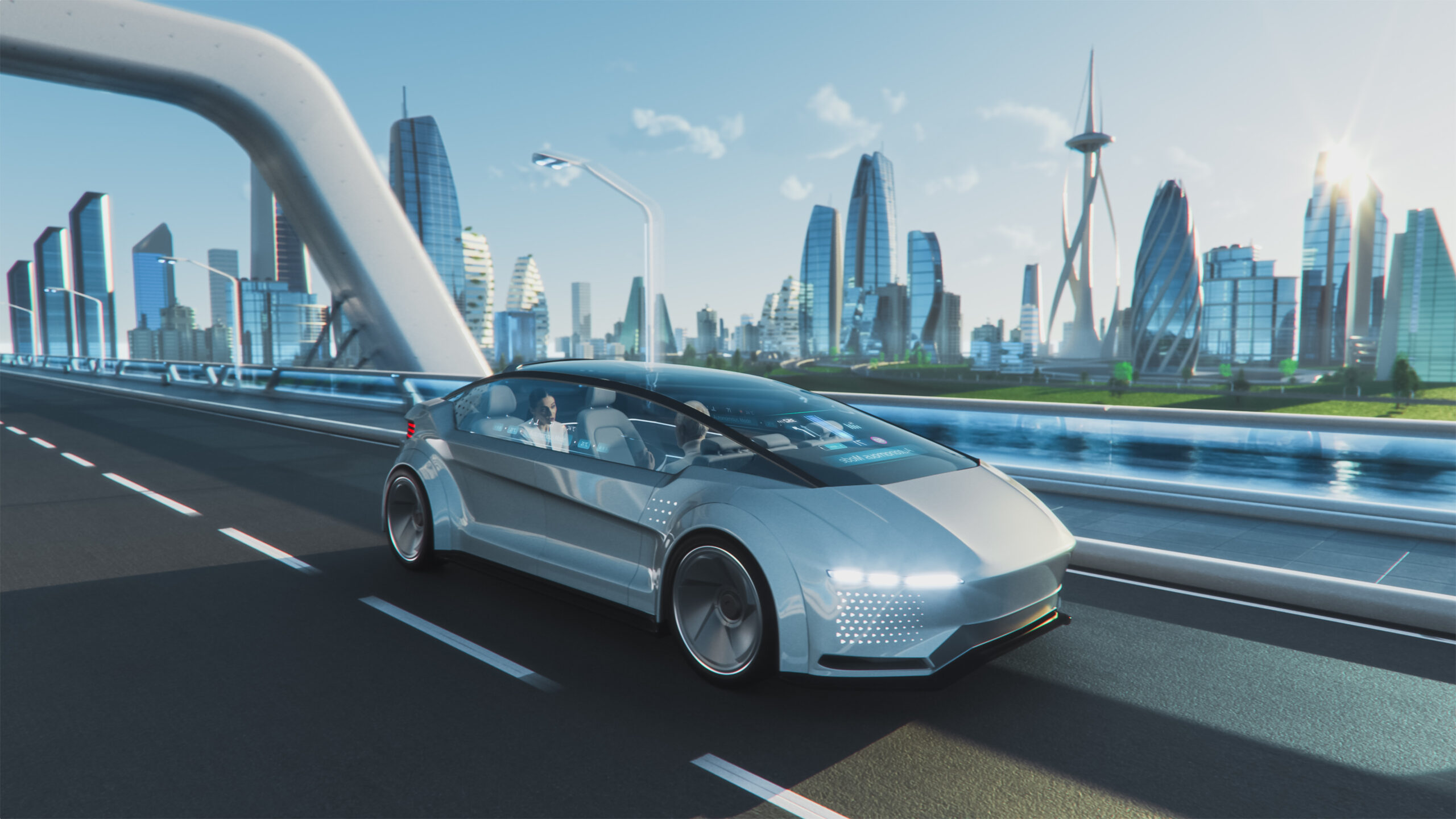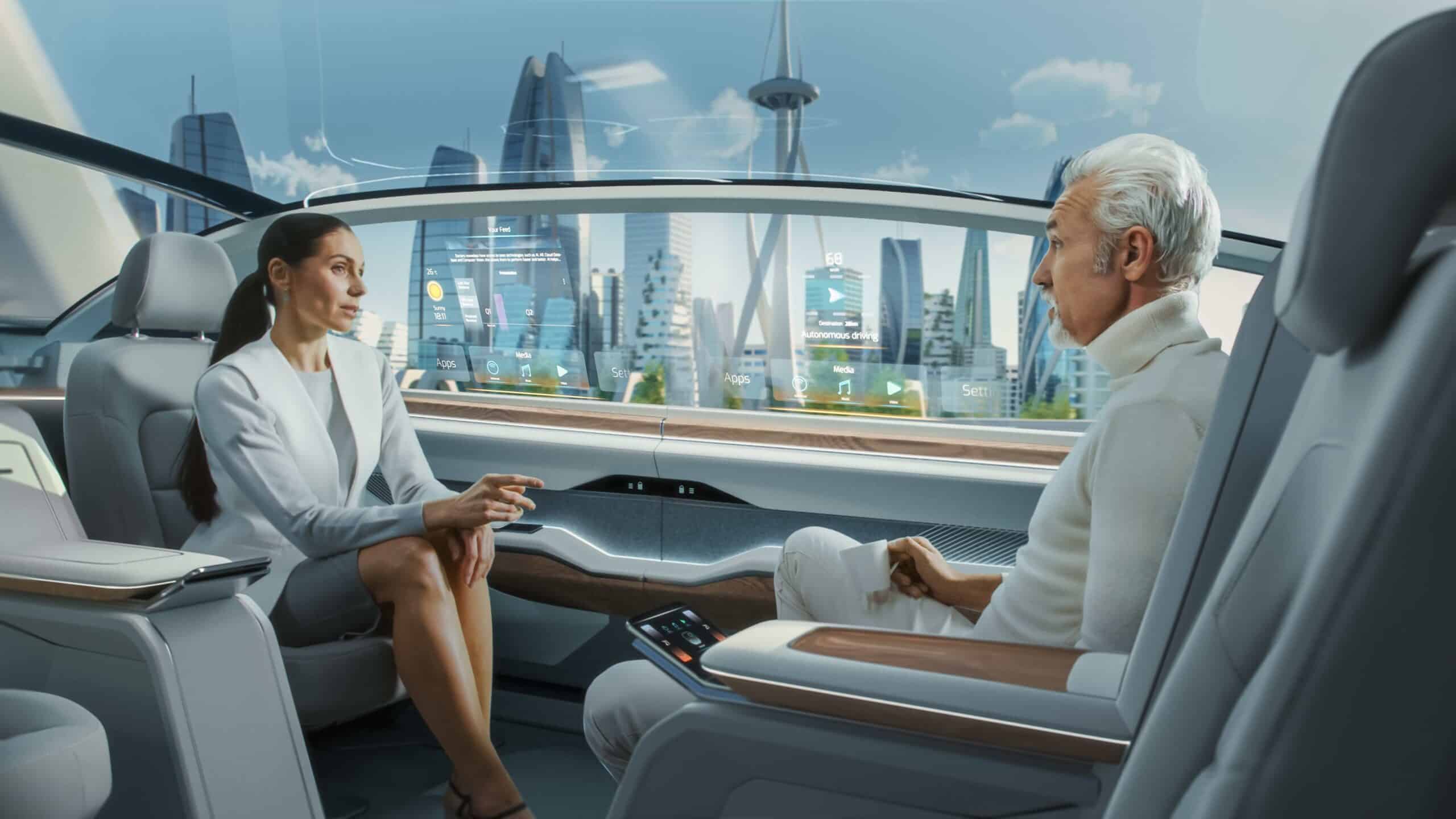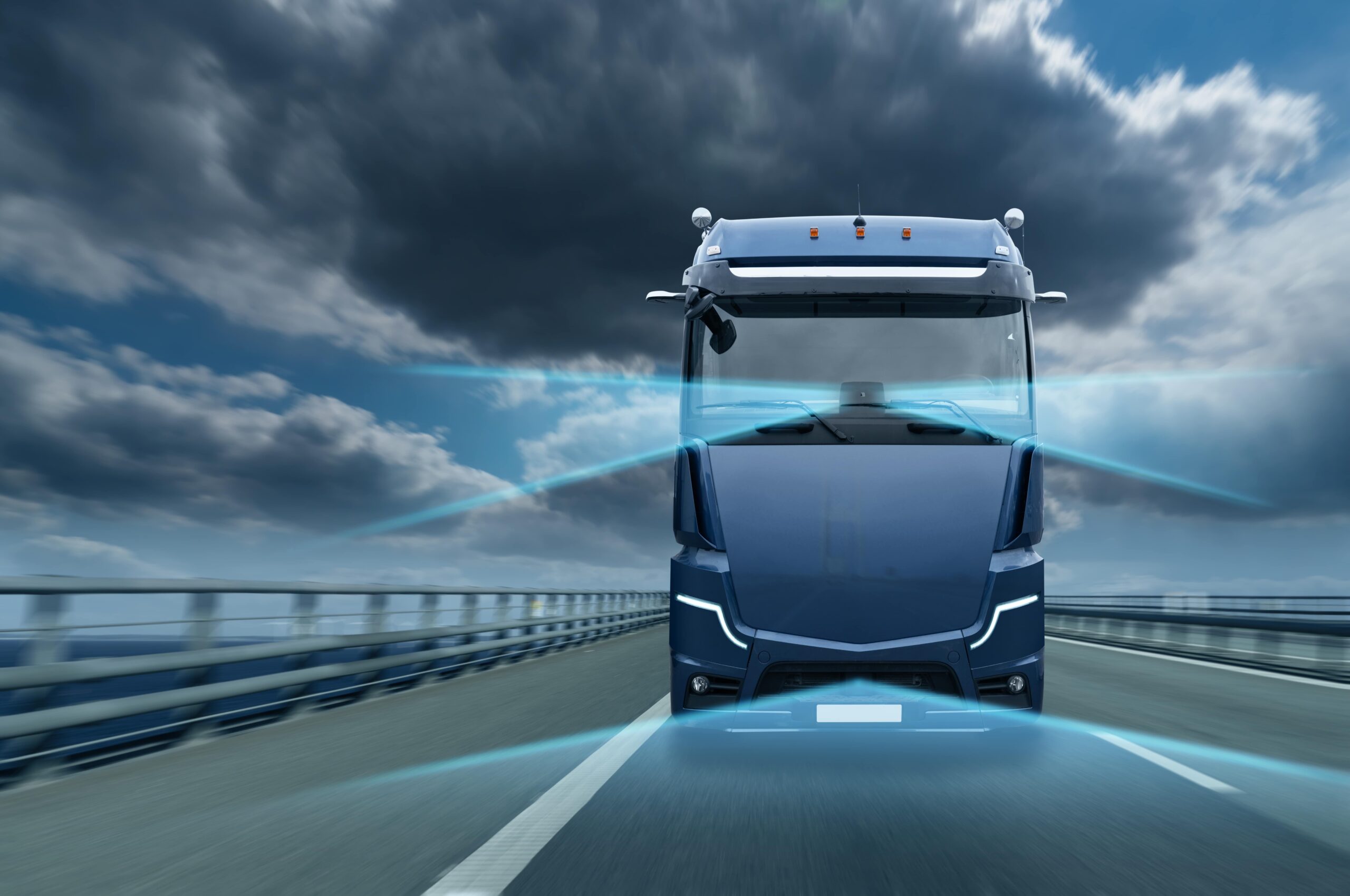- Elevating road safety through next-level connectivity
- Smart road innovations can alleviate urban gridlock
- Charging EVs while you drive for uninterrupted journeys
- Roads that honk — the future of collision prevention?
- Embracing smart roads means taking a step towards a greener planet
Across the sprawling landscapes of our cities, one persistent challenge remains a focal point for urban planners and authorities alike: the ever-increasing menace of traffic congestion. As the planet witnesses unprecedented urbanisation and cities bulge at the seams, finding innovative solutions to traffic woes has become imperative. Enter the era of ‘smart roads’, a groundbreaking concept that promises not only to alleviate these transport challenges but also to redefine the way we perceive urban mobility. At the heart of this transformative shift are technological advancements that empower these roads to be more than just static infrastructures. Outfitted with a plethora of sophisticated tools like sensors, cameras, and state-of-the-art communication systems, smart roads are poised to make our journeys more fluid, safer, and environmentally harmonious. Imagine roads that monitor vehicle flow and intuitively adjust traffic lights, significantly curbing the hours we lose to traffic jams. Envision seamless toll fee transactions without the need for manual intervention, or lanes dedicated to charging electric vehicles on the go. And for the safety-conscious, envisage roads equipped with alert systems that ‘honk’ at inattentive pedestrians or potential hazards. As we delve deeper into this topic, we’ll explore the profound implications of these roads, offering a glimpse into a future where our commutes are not only quicker and cleaner but also intrinsically smarter.
“This collaboration between the 5G Automotive Association and its member companies is the perfect example of how we can secure safety on roads and build the future of connected mobility”.
Maxime Flament, CTO of 5GAA
Elevating road safety through next-level connectivity
The connectivity of our roadways has emerged as a pivotal element in elevating road safety. According to Intel, cities can utilise Internet-of-Things (IoT) insights to optimise traffic management and devise improvements to transportation strategies for the future. Smart, connected road systems employ a combination of sensors, cameras, and various other smart tools to gather information about traffic patterns, environmental conditions, and the state of road surfaces. This data is then analysed and used to improve road safety. Furthermore, these systems can pinpoint and notify drivers of imminent dangers, whether it’s slippery surfaces, ongoing roadworks, or other hazards. Alarmingly, deaths among pedestrians have surged by 46 per cent in the last ten years, a stark contrast to the 5 per cent rise in other traffic-related fatalities. By integrating smart devices at intersections, enhanced safety alerts can be provided, particularly benefiting pedestrians, cyclists, and motorbike riders.
Recently, Turin, Italy, showcased the power of connectivity at an international live trial focused on enhancing driver and pedestrian safety. Orchestrated by the 5G Automotive Association (5GAA), this trial harnessed the combined power of high-speed 5G-edge networks, edge computing, and the Internet of Things (IoT) to facilitate near-instantaneous notifications of potential road hazards. Through this system, vehicles and pedestrian smartphones could seamlessly communicate, a testament to the transformative possibilities of the connected car concept. Maxime Flament, CTO of 5GAA, said: “This collaboration between the 5G Automotive Association and its member companies is the perfect example of how we can secure safety on roads and build the future of connected mobility”.
Meanwhile, in Spain, the Cellnex Mobility Lab in Castelloli is leading the way in road safety innovation. They have transformed the Circuit Parcmotor Castelloli racing complex into a state-of-the-art smart mobility lab, integrating high-definition cameras, a cellular Vehicle-to-Everything (C-V2X) wireless network, and converged edge architecture for a comprehensive approach. This innovative integration not only paves the way for safer vehicle and pedestrian interactions but also underscores the overarching vision: a future where roads are not just concrete paths but intelligent, responsive ecosystems that dynamically adapt to ensure maximum safety for all. Òscar Pallarols, Cellnex Global Director of Innovation and Strategy, said: “The implementation of this Mobility Lab allows us to develop and test the connectivity technologies, in conjunction with the actors of the automotive sector, that will boost the autonomous and connected vehicle, which will be key to future mobility both in urban and interurban environments. Thanks to Octagon, at Circuit Parcmotor we will have an innovative ecosystem allowing all the actors involved to work together on the solutions that will make connected mobility a reality”.
Emerging from Israel, RoadSense Advanced Technologies is at the forefront of creating IoT sensors designed for the next generation of smart roads. These cutting-edge sensors gather a wealth of information, covering everything from traffic changes to potential road hazards and detailed information on driver behaviour. Positioned strategically along roadsides, the units from RoadSense keep a vigilant watch over traffic dynamics, promptly identifying and signalling events of concern, whether it’s an accident, unexpected roadblocks, or any other potential threats. Drivers are then immediately informed with visual signals. Fully aware of the financial implications of adopting such technology, RoadSense has smartly incorporated an independent energy source into each unit. This ensures they remain operational at all times, free from reliance on nearby power networks, paving the way for a practical and cost-effective shift to intelligent roads.
Smart road innovations can alleviate urban gridlock
In an era where urban centres are grappling with escalating traffic congestion, the concept of ‘smart roads’ emerges as a beacon of hope. Equipped with sensors, cameras, and integrated communication systems, smart roads don’t just facilitate transport; they actively adapt to optimise it. By collecting and analysing real-time data, these roads promise a transformative shift in traffic management, aiming to reduce bottlenecks and improve vehicular flow. The Gridsmart System, for instance, which operates on Arizona’s Bell Road Highway in the US, perfectly exemplifies how sophisticated systems can serve as a potent antidote to the pervasive issue of traffic congestion. By harnessing computer vision technology to monitor intersections and collect real-time traffic data, the system has successfully reduced delays by an impressive 43 per cent during weekends and 20 per cent on weekdays. Prioritising safety, Gridsmart is developed to offer a holistic omnidirectional imaging solution. It seamlessly collaborates with traffic management systems to oversee and streamline intersection movement for vehicles and bicycles, while also evaluating and reporting on intersection efficacy.
The innovative Bell Camera enables traffic engineers to fine-tune signal timing and devise strategies for optimal traffic flow. Furthermore, its integration of a fisheye camera, combined with cutting-edge computer vision tracking and advanced neural network analysis, tells cyclists apart from other road users as they traverse intersections. Gridsmart’s unique capability to distinguish between various traffic forms at crossings aids in understanding and ensuring the safety of all road users. It closely monitors both pedestrians and cyclists, adjusting signal timings based on individual speed and trajectory, harmonising intersection activities for diverse traffic categories. Moreover, emphasising pedestrian safety, Gridsmart’s single camera, equipped with an ultra-wide-angle lens, monitors all movement within its radius. This ensures instantaneous intersection management, detecting pedestrians, bikes, cars, and trucks, while documenting metrics like vehicle dimensions, counts, and movements.
Charging EVs while you drive for uninterrupted journeys
Smart roads also have the potential to reshape the electric vehicle (EV) charging landscape. A prominent player in this sector, ElectReon, leverages Dynamic Wireless Power Transfer (DWPT) to fuel electric buses on the go using sustainable energy sources. Notably, this mechanism isn’t confined to buses; it offers the versatility of energy transfer between various vehicles navigating the roads. The company initiated a groundbreaking programme for buses in Tel Aviv in early 2021, with subsequent announcements of further experiments in Italy and Germany. Teaming up with EnBW, a renowned name in Germany’s electric vehicle charging infrastructure sector, ElectReon is setting the stage for an innovative Electric Road System (ERS) deployment.
Spanning a kilometre, this strip of road will be complemented by two strategically placed charging stations, pinpointed based on the bus’s route and its regular stop points. A closer look at the underlying technology reveals a sophisticated system where copper coils are embedded within the road. Vehicles equipped with receiving coils on their underbody draw energy as they drive over the coils, using magnetic fields to transfer this energy to the EV’s battery. This enables vehicles to journey over long distances without having to stop for traditional charging, which is especially beneficial for those transporting heavy cargo. This innovative approach has already proven successful in a pilot run in Karlsruhe, where an electrified pathway at the EnBW training facility kept a local bus operational during peak hours.
Roads that honk — the future of collision prevention?
To improve safety on India’s highways, the American advertising company Leo Burnett and HP Lubricants went into a partnership to develop ‘The Roads that Honk’ system, a unique safety initiative in which smart poles are installed at critical bends and hairpin turns on highways, to help prevent head-on collisions, especially in areas with limited visibility. These poles are equipped with radar, wireless communication technology, and anti-collision warning systems, all powered by solar panels. When vehicles approach these turns from opposite directions, the radars detect their presence, measure their speed, and instantly activate cautionary signals on both poles, essentially ‘honking’ to warn drivers of the oncoming traffic. The system works by sending out an electromagnetic signal in the 24 GHz range (K band) and then measuring how the frequency of the returning signal has changed. This change in frequency is due to the Doppler effect, which occurs when the target is moving. The faster the object moves relative to the radar, the greater the change in the returned signal’s frequency. This allows the radar to accurately gauge the speed of the object in question.
‘The Roads that Honk’ system has been installed on the Leh-Manali Highway in India, a significant artery connecting the regions of Leh and Manali. This road is not just any highway; it’s one of the most challenging and treacherous routes in the country. Winding through the rugged terrains of the Himalayas, the highway presents perilous curves, unpredictable weather conditions, and high altitudes, making it a daunting journey even for seasoned drivers. Countless travellers, from adventurous backpackers to diligent truckers, frequent the Leh-Manali Highway. The constant stream of traffic, combined with the inherent dangers of the route, used to result in numerous accidents, especially at blind spots and sharp turns. The system’s ability to warn drivers about oncoming traffic, particularly in blind spots, has reduced the number of potential head-on collisions, although it’s challenging to quantify the exact number of accidents prevented by this innovation. Local authorities and regular travellers on this route have acknowledged the positive impact of the system, underlining its importance in accident prevention and promoting overall road safety.
Such a shift isn’t just about comfort or efficiency; it’s also about sustainability. Fewer traffic jams mean reduced emissions and a cleaner environment.
Embracing smart roads means taking a step towards a greener planet
Smart roads are also poised to be a game-changer in the ongoing battle against global carbon emissions. As urban areas around the world grapple with the challenges of increasing vehicular traffic and the accompanying environmental degradation, the optimisation of traffic flow emerges as a crucial solution. By utilising sophisticated sensor networks, real-time data analytics, and adaptive traffic management systems, smart roads can dynamically adjust traffic patterns to minimise bottlenecks and keep vehicles moving more smoothly. The direct consequence of this is a notable reduction in the time cars spend idling or in stop-and-go traffic, leading to decreased fuel consumption and, by extension, lower CO2 emissions. This also improves air quality, benefiting public health. Smart roads can also promote energy efficiency as they can be equipped with smart lighting systems that only illuminate with energy-efficient LED lights when vehicles are present, significantly reducing energy consumption. By contributing to an environmentally conscious transportation infrastructure, drivers indirectly support sustainability and the broader goals of environmental conservation as well. Smart roads hold economic benefits for drives as well. The fact that less fuel is consumed due to the diminished need for constant acceleration and braking in heavy traffic translates to a noticeable reduction in fuel expenses, making daily commutes more economical. In essence, the advent of smart roads encapsulates the harmony of technological advancement with ecological responsibility, steering us towards a greener, more sustainable future.
In closing
The dawn of smart roads signifies a brighter trajectory for urban areas. These aren’t just stretches of tarmac; they represent a blend of technology and infrastructure built to cater to the modern city. By integrating real-time communication tools with traditional roadways, the journey promises to be smoother and safer for all. As urban areas expand and our technological capabilities mature, roads aren’t merely static paths but dynamic systems responding to vehicular flow and environmental conditions. Imagine a drive where traffic management adapts in real-time, reducing congestion, or a pedestrian crossing that alerts drivers of foot traffic ahead. The seamless integration of sensors and communication devices means not only quicker commutes but also enhanced safety measures. With innovations like these, it’s clear that our transportation infrastructure is evolving, shaping up for the demands of tomorrow. Such a shift isn’t just about comfort or efficiency; it’s also about sustainability. Fewer traffic jams mean reduced emissions and a cleaner environment. For the everyday commuter, this means less time on the road and more with loved ones. As we move forward, collaboration among city planners, technologists, and communities will be vital to harness the full potential of smart roads, leading us into a more connected and efficient urban future.




